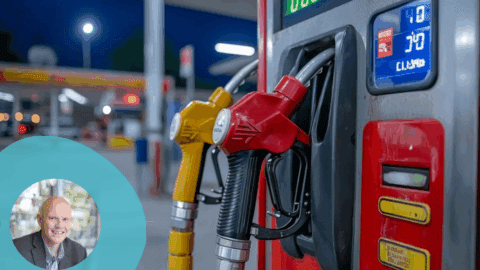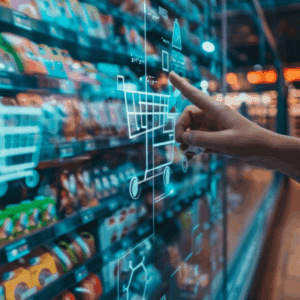Sustainability has long since progressed from a “nice to have” to a “must-have,” backed by mandated requirements for the entire retail ecosystem. And while there are certainly costs associated with going green (though it turns out greenwashing is often more expensive), sustainability has the potential to boost sales, cut costs and increase efficiencies — including the bonus benefit of reducing product returns.
That was the key message from Angus Hayman, a Senior Strategist at Akeneo who spoke on a Retail TouchPoints webinar titled Green is Gold: Unlocking the Business Value of Sustainability in Retail. He discussed not just the business benefits of going green but the negative consequences of greenwashing — like the $30 billion in fines Volkswagen paid when it was discovered that the carmaker faked emission test results in 2009.
Hayman also put numbers behind the benefits of actually going green:
- Sales growth: Sustainability is now among the top four buying criteria for 50% of U.S. consumers, according to Bain & Co.;
- Premium pricing: 50% of U.S. customers are willing to pay more for sustainably produced products, according to Akeneo research;
- Revenue growth: Green companies are twice as likely to grow their revenue by 10% or more annually, according to McKinsey.
Tallying up the Costs of Greenwashing
Despite the progress that’s been made in moving the retail industry toward greater sustainability, greenwashing remains a major problem — one that is a “ticking time bomb,” according to Hayman. He quoted a Google survey revealing that 58% of CEOs and C-suite executives admitted that their companies were guilty of greenwashing.
The greenwashing doesn’t have to be as blatant (or illegal) as Volkswagen’s actions; often it’s a matter of a company not sufficiently researching the impacts of their actions. For example, in 2019 McDonald’s replaced its plastic straws with paper as it sought to polish its sustainability credentials. Only one problem: the paper straws actually were less recyclable than the plastic ones had been, meaning “McDonald’s had to spend time and money on responsive PR and advertising campaigns to re-establish their green credentials,” Hayman explained.
A Tale of Two Retailers
Hayman also contrasted two apparel retailers and their overall approach to sustainability. While H&M seemed to be supporting green goals when it promoted its Loop recycling initiative, only a fraction of the three billion garments the vertical company produces each year are actually recyclable. This example of promoting “edge” cases — making large claims about a small portion of a company’s products or operations — is a classic greenwashing technique, according to Hayman.
Additionally, even though H&M used the industry standard Higg Index Tools to score its sustainability activities, “more than half of H&M’s sustainability scorecards overstated the benefits,” said Hayman.
Another, much smaller Swedish apparel retailer, Asket, offers a more limited product assortment that’s designed to minimize waste by using long-lasting, high-quality materials. Hayman praised the company’s ability to not just collect data but also to communicate that data to customers and other stakeholders.
Hayman gave the example of Asket’s ability to calculate the carbon emissions generated by its products — one that requires a holistic approach to supply chain data: “Where did the raw materials come from? How were the raw materials turned into fabric? How is the fabric handled and created, and how were the products moved and [how did they] ultimately arrive to the customer? Asket can understand the actual and environmental costs of each of their products, and all this information, at a product-specific level, is visible on their product pages,” he said.
Asket also discloses the social impacts of their products, such as working conditions in factories — even if their information is incomplete in places. “They’re very transparent — [they’ll admit they] don’t have 100% of the info for 100% of their products, but they acknowledge that,” said Hayman. “Customers want that level of transparency.”
Detailed Product Data Supports Supply Chain Flexibility
One of the most immediate benefits of investing in the data-gathering needed for green initiatives is that, because it is by necessity product-specific, retailers can use it to make product descriptions more robust and accurate. This in turn can lower return rates, given that many shoppers return items because they don’t match their online descriptions.
Additionally, the effort required to gather, analyze and share data in order to achieve sustainability goals provides an ROI when supply chain disruptions force retailers to pivot — which is a certainty yet also remains unpredictable as to when, and what type of challenge may cause the disruption.
“When it comes to supply chain flexibility and being future-ready, if you understand where your [environmental] impact is from a supply chain perspective — and that means the carbon footprint as well as other costs and transportation — and you fully understand how your costs are configured, should you need to change your supply chain, you’ll understand where to pull the levers in the most efficient way,” said Hayman.
It’s not an easy task, and like many other aspects of sustainability, it requires continuous monitoring and updating. “You need to have a supply chain for data the same way you have a physical one,” said Hayman, noting that many suppliers are challenged by the need to prove their green credentials. “They’re looking to improve, but they may not necessarily be able to provide all the data you need, all the time,” he warned.
Hayman concluded the session with five pillars of a strong sustainability strategy:
- Meet customer and regulatory expectations with specific, transparent and verifiable product information;
- Prioritize full supply chain transparency to highlight traceability, as well as costs and environmental impacts;
- Reduce returns to minimize carbon footprint with data that sets the right expectations;
- Be proactive, because regulations are continuously evolving; and
- Build in continual assessments of your sustainability roadmap.













